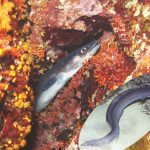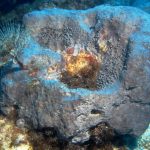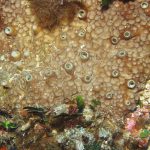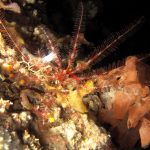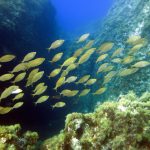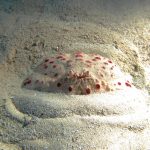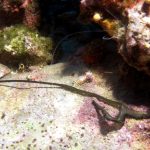Diving into the Subtropical Depths: Unveiling the Enigmatic Starry Weever
Beneath the azure waves of the Eastern Atlantic Ocean lies a mysterious creature known as Trachinus radiatus, or more poetically, the Starry Weever. This subtropical marine fish, a member of the weevers genus, captivates with its intriguing features and unique behaviors.
Weevers, often mistakenly referred to as ‘weaver fish,’ have a name shrouded in etymological richness. The term ‘weever’ is believed to trace its roots to the Old French word ‘wivre,’ meaning serpent or dragon, originating from the Latin ‘vipera.’ Despite occasional nicknames like ‘viperfish,’ the Starry Weever shares no kinship with the true viperfish of the genus Chauliodus.
Linnaeus bestowed the genus name ‘Trachinus,’ derived from the Medieval Latin trachina, onto this captivating fish. The term itself can be traced back to the Ancient Greek word τρᾱχύς (trachýs), meaning ‘rough.’ Within the intricate web of taxonomy, the Starry Weever finds its place in the family Trachinidae, order Trachiniformes, class Actinopterygii, phylum Chordata, and kingdom Animalia.
In the dance of underwater life, the Starry Weever emerges as a striking figure, reaching up to 37 centimeters in length. Its elongated, laterally compressed body, adorned with a large head and a wide, upward-facing mouth, captivates the observer. The eyes, perched at the pinnacle, add an element of intrigue to its appearance, while the dorsal fins and gills boast a formidable, backward-pointing spine.
The Starry Weever boasts two dorsal fins, the first characterized by six venomous spiny rays. The second dorsal fin, with its soft rays, extends gracefully. A chromatic kaleidoscope adorns its skin, ranging from yellowish-brown to light greyish-brown, accentuated by numerous dark spots.
Remarkably, the Starry Weever defies the norm among bony fish, eschewing swim bladders. Consequently, it gracefully descends when not in motion. During daylight hours, this enigmatic creature buries itself in the sand, leaving only its eyes exposed, patiently waiting to ambush prey – a menu that includes shrimp and small fish.
While encounters with the Starry Weever can be uncomfortable, the stings, though unpleasant, are generally not perilous. The pain typically subsides within a few hours, even without treatment. In the event of an unfortunate encounter, swift first aid involves immersing the affected area in hot water, providing relief and accelerating the denaturation of the venom.
Captured in a stunning photograph by Brian Azzopardi at a depth of 10 meters in Mġarr Ix-Xini, on Gozo’s south coast, the Starry Weever emerges as a symbol of the captivating mysteries concealed beneath the ocean’s surface. A creature both beautiful and formidable, it invites us to explore the wondrous diversity of marine life that thrives in the depths of our planet’s seas.


